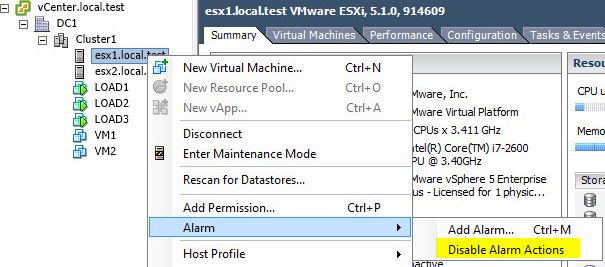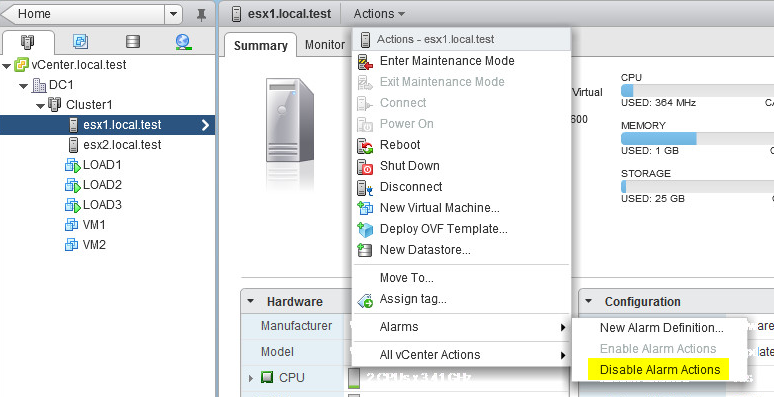Another post triggered by a question in the VMTN PowerCLI community. The user wanted to know how he could create a report that showed for which vSphere entities the alarm actions were disabled.
To set the stage, a short overview of what this is all about. In vSphere you can, since vSphere 4, disable and enable alarm actions for all the managed entities. This option is available from the vSphere client
and from the vSphere Web client.
But how to automate these actions, and more importantly in this case, how to report on the active settings ? Like always PowerCLI to the rescue.




